You have 0 product(s) in your cart.
Abyss Scuba Diving
Scuba Diving In Australia: Exploring The Best Sites Downunder

Scuba Diving in Australia: Exploring the Best Sites
Are you ready to embark on an underwater adventure like no other? Scuba diving in Australia offers diverse marine life and dive sites, providing unforgettable experiences for scuba divers of all levels. From the world-famous Great Barrier Reef to the lesser-known, yet equally mesmerizing temperate waters, Australia is a diver’s paradise. So grab your gear and dive in, as we take you on a spectacular journey through the best dive sites for scuba diving in Australia!
Short Summary
-
Discover the underwater wonders of Australia with its unparalleled Great Barrier Reef and unique marine life!
-
Explore exciting dive sites from Sydney to Ningaloo Reef, plus topside activities for all levels of divers!
-
Equip yourself with practical information before your scuba adventure - it’s time to dive in Down Under!
Discovering Australia's Diving Wonders
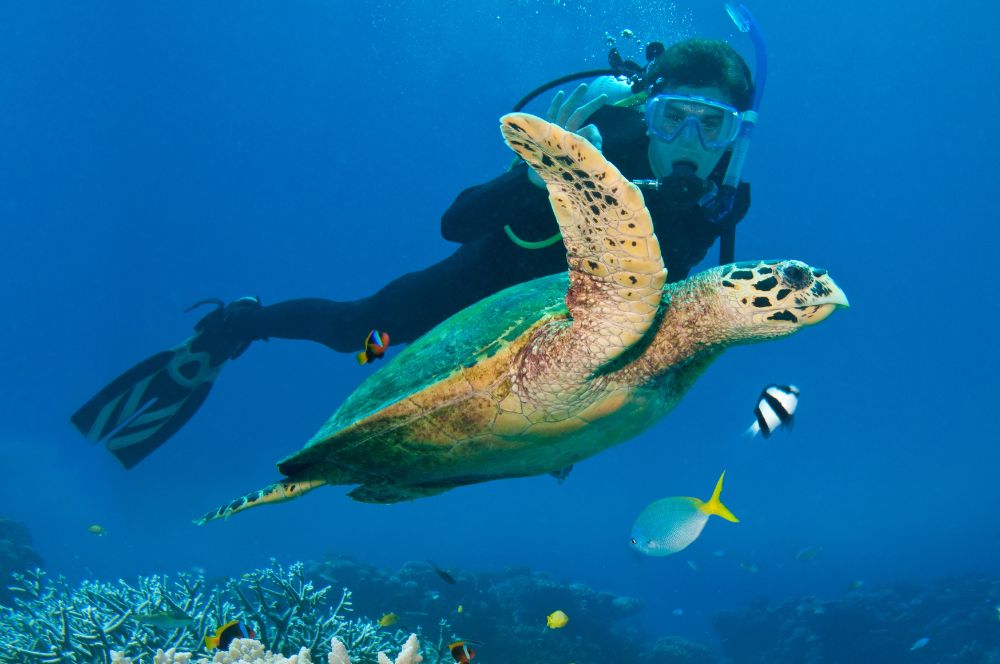
Australia boasts an incredible diversity of dive sites and marine life, making it a bucket-list destination for scuba divers worldwide. Imagine gliding through the crystal-clear waters of the Great Barrier Reef, witnessing majestic whale sharks, playful reef sharks, and vibrant coral formations. But the wonders don’t end there; Australia’s temperate waters offer unique encounters with weedy sea dragons, rare endemic fish species, and even cage diving with great white sharks!
With so many diving destinations to choose from, it’s no wonder scuba divers flock to Australia. From the picturesque coral gardens of New South Wales to the thrilling cave diving at Fish Rock Cave, there’s something for everyone. So whether you’re a beginner eager to explore the underwater world, or an experienced diver seeking new challenges, Australia’s best dive sites await your discovery.
Unparalleled Great Barrier Reef
There’s no doubt that the Great Barrier Reef is a must-visit destination for divers. As the largest and healthiest coral reef system on the planet, it spans an incredible 1,400 miles of ocean and contains over 2,900 individual reefs. The Great Barrier Reef offers unparalleled coral reefs, diverse marine life, and excellent visibility for unforgettable underwater experiences.
Home to minke and humpback whales, as well as a plethora of tropical marine life, the Great Barrier Reef boasts some of the world’s best dive sites. Lady Elliot Island, Flynn Reef, Tennis Courts, and Osprey Reef are truly some of the most spectacular dive sites out there. It is an absolute must to check them out!
To fully immerse yourself in this underwater wonderland, consider taking a liveaboard tour for at least 3 to 4 days or longer. This will allow you to reach the more remote parts of the great barrier reef and truly experience the magnificence of this UNESCO World Heritage site.
The Unique Marine Life of Australia's Temperate Waters
While the Great Barrier Reef may be the star attraction, Australia’s temperate waters offer a unique and equally mesmerizing diving experience. These waters are home to an incredible array of endemic species, such as the Leafy Sea Dragon, it's cousin the weedy seadragon, Australian Sea Lion, Australian Giant Cuttlefish, and Southern Blue-Ringed Octopus. Scuba divers from around the world come to witness these rare and enchanting creatures.
One of the most sought-after encounters in Australia’s temperate waters is the elusive Leafy Sea Dragon. This incredibly rare species of fish can be found while diving off jetties in Adelaide, offering a once-in-a-lifetime experience for divers. Other exciting dive sites in these cooler waters include Eaglehawk Dive in the Tasman Peninsula, where you can explore vibrant sponge gardens, mysterious underwater caves, fascinating shipwrecks, huge colonies of fur seals, and majestic giant kelp forests.
Exploring New South Wales
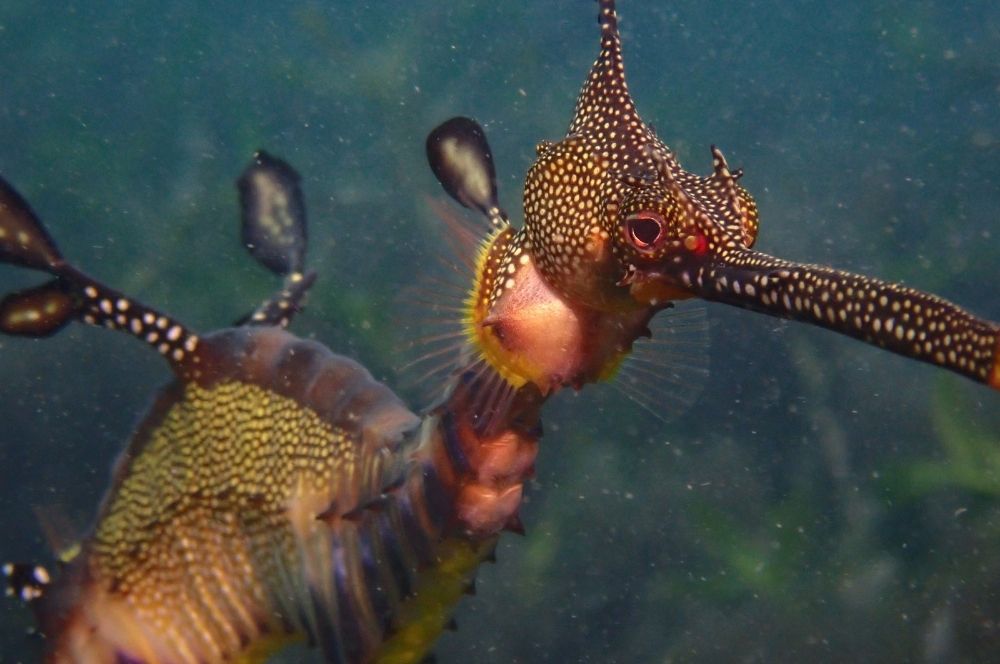
New South Wales offers a treasure trove of underwater experiences for divers to explore. From the bustling city of Sydney, with its iconic dive sites like Kurnell, to the exhilarating cave diving at Fish Rock Cave, there’s no shortage of adventures waiting beneath the waves. Encompassing a mix of vibrant cities, pristine beaches, and thrilling dive sites, New South Wales is a diver’s dream destination.
In addition to Sydney and Fish Rock Cave, New South Wales is home to other exciting dive destinations like Byron Bay and Lord Howe Island. For those looking for an alternative to the Great Barrier Reef, South West Rocks offers incredible diving experiences with its diverse marine life, including Grey Nurse Sharks, cuttlefish, rainbow runners, moray eels, pufferfish, and sea spiders. With so many enticing dive sites to choose from, New South Wales is a must-visit destination for divers.
Sydney, the Gateway to Australia
As Australia's most populous city, Sydney serves as an excellent launchpad for delving into the country's breathtaking underwater realms. Notably, the city is home to Kurnell, a dive site renowned not only for its diving allure but also for its historical significance.
Kurnell, where Captain Cook first set foot on Australian soil, is now a sanctuary for a diverse array of marine life. This includes the enchanting weedy sea dragon, alongside over 200 other fish species, octopuses, wobbegongs, and various rays, in a mesmerizing underwater landscape.
Sydney's extensive list of dive sites also features Bare Island, Shelly Beach, Ship Rock Aquatic Reserve, Magic Point, Oak Park, and Chowder Bay. With such a vast selection, Sydney indeed stands as an ideal starting point for those keen on unveiling the underwater marvels of Australia.
Cave Diving at Fish Rock Cave
For those seeking a thrilling diving experience, Fish Rock Cave in New South Wales offers an unforgettable adventure. This cave dive site is home to pink coral, nurse sharks, wobbegong, morays, octopus, lobsters, turtles, and various shark species. The unique combination of marine life and the excitement of cave diving make Fish Rock Cave a must-visit dive site for any diver.
Fish Rock Cave is just one of the many exhilarating dive sites in New South Wales. With its diverse marine life, stunning underwater landscapes, and thrilling cave diving experiences, New South Wales offers something for every diver to enjoy. So go ahead and take the plunge into the deep blue waters of this incredible Australian diving destination.
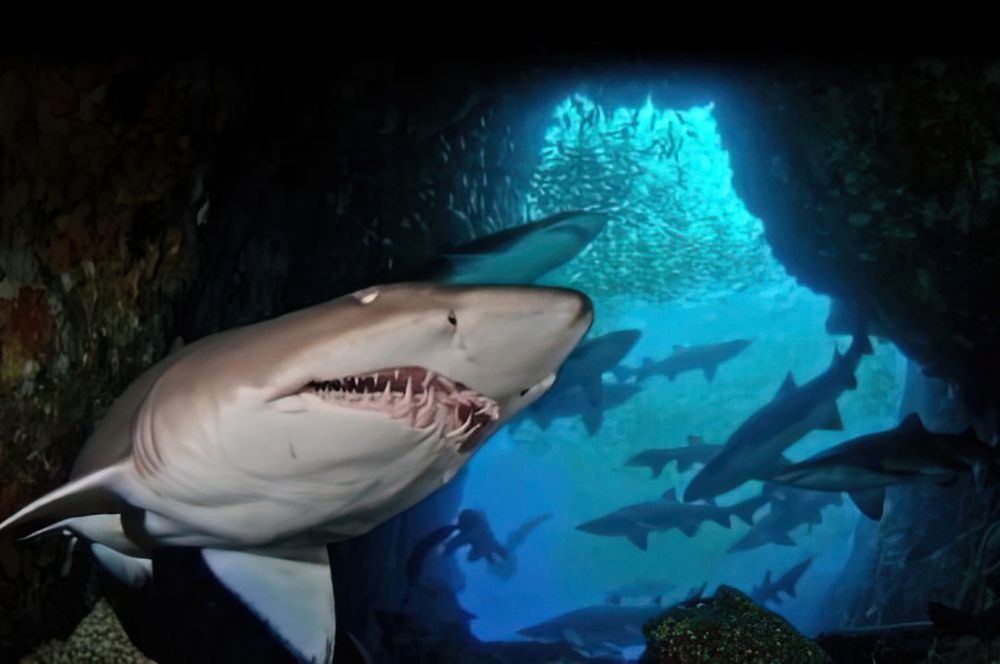
Queensland, much more than Cairns
Queensland is often synonymous with Cairns and the Great Barrier Reef, but it has so much more to offer divers. With dive sites like Lady Elliot Island, known for its manta rays, and numerous shipwrecks waiting to be explored, Queensland is a diverse diving destination for all levels of scuba divers.
In addition to Lady Elliot Island, Queensland is home to other exciting dive sites, such as the SS Yongala wreck, which is teeming with marine life like giant groupers, eagle rays, manta rays, sea turtles, and sea snakes. Altogether, Queensland offers a rich and varied diving experience that goes far beyond the boundaries of Cairns and the Great Barrier Reef.
Lady Elliot Island and its Manta Rays
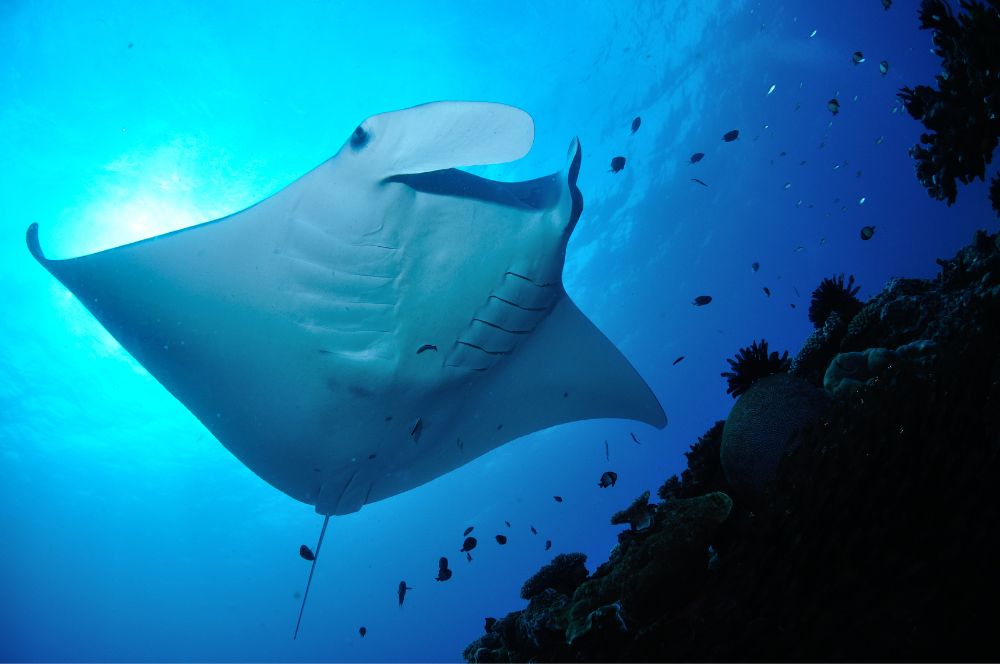
Lady Elliot Island, a pristine coral cay located in the Great Barrier Reef, is known for its diverse diving experience, with 20 amazing dive sites around the island easily accessible by boat dives. A true gem in Queensland, Lady Elliot Island is home to a variety of marine life, including manta rays, turtles, reef sharks, and a variety of colourful fish.
Known as “The Home of the Manta Ray,” Lady Elliot Island is home to a large population of manta rays, which can be seen year-round. Diving with these graceful giants is an unforgettable experience, and Lady Elliot Island offers the perfect opportunity for divers to witness these magnificent creatures up close.
Queensland's Shipwreck Adventures
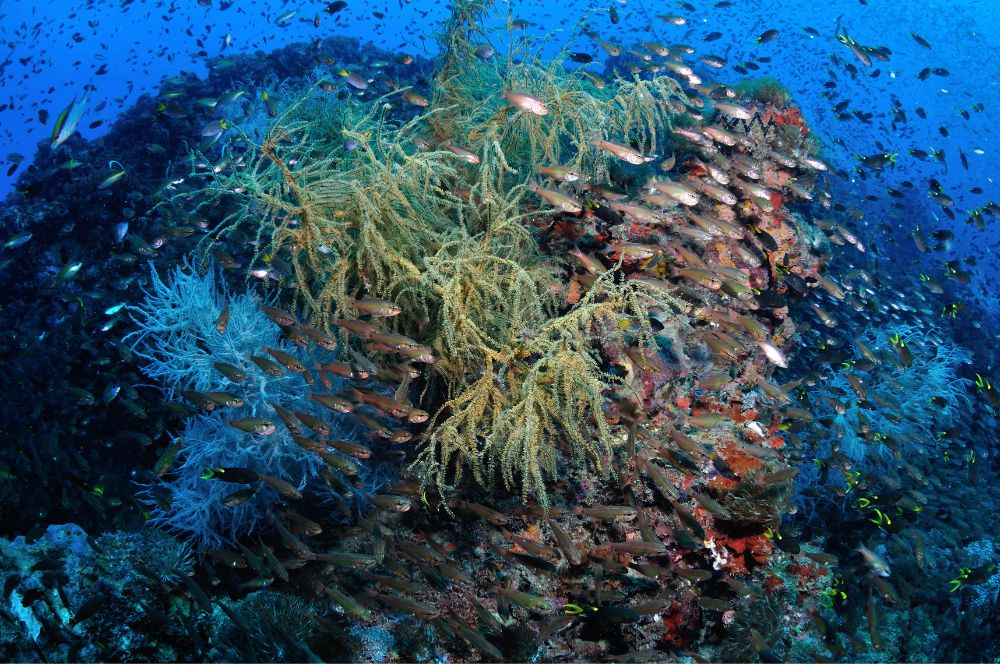
Queensland’s shipwreck adventures offer divers an exciting opportunity to explore the underwater history and experience the marine life that now inhabits these wrecks. The famous SS Yongala wreck, for example, is home to an abundance of marine life, including giant groupers, sea snakes, chevron barracudas, eagle rays, and hawksbill turtles.
With its numerous shipwrecks, vibrant marine life, and diverse underwater landscapes, Queensland’s shipwreck adventures provide a thrilling and unique diving experience. Whether you’re exploring the SS Yongala or one of the many other shipwrecks scattered throughout Queensland’s waters, these underwater adventures are sure to leave a lasting impression on any diver.
Victoria's Marine Marvels
Victoria’s marine marvels offer divers a unique underwater experience, with dive sites ranging from piers to offshore islands boasting colourful reefs and diverse marine life. From the remarkable Flinders Pier, home to the weedy seadragon, to the offshore islands with their vibrant sponge gardens, mysterious underwater caves, and fascinating shipwrecks, Victoria is a diver’s paradise.
In addition to its unique piers, Victoria’s offshore islands offer a plethora of stunning dive sites teeming with marine life. Here, divers can encounter species such as octopuses, seals, seahorses, eels, nudibranchs, weedy seadragons, and many others. With such an incredible array of marine marvels to explore, Victoria is a must-visit destination for any diver.
South Australia's Underwater Treasures

South Australia is home to a variety of underwater treasures, offering divers thrilling shore dives and encounters with sharks and unique marine species. South Australia’s dive sites are as diverse as they are captivating, from the stunning Neptune Islands to the Fleurieu Peninsula.
In addition to its offshore dive sites, South Australia’s shore dives offer unique experiences for divers, including the opportunity to scuba dive. Flinders Pier and Rapid Bay Jetty are two popular shore dives, where divers can spot weedy sea dragons and other marine life in a serene underwater setting.
With so many underwater treasures to discover, South Australia is a fantastic destination for experienced divers and those new to the sport alike.
Shore Dives: Flinders Pier & Rapid Bay Jetty
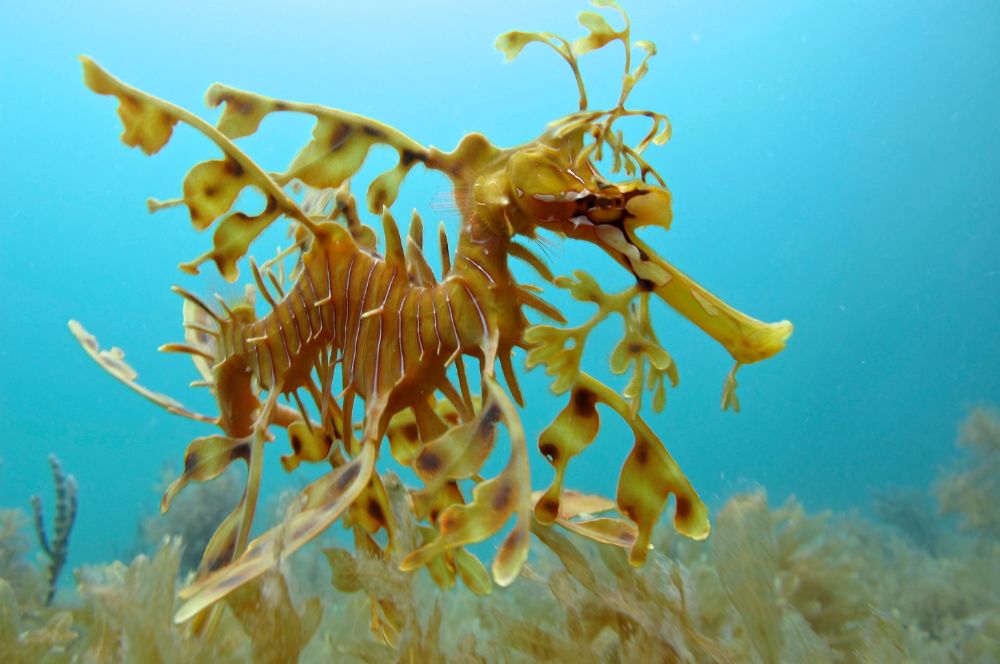
Flinders Pier, located in South Australia, is a stunning dive spot known for its amazing weedy seadragon population. Divers can also encounter cuttlefish, seahorses, and nudibranchs among the pier’s underwater structures. The best time to dive at Flinders Pier is on a high or slack tide, ensuring optimal conditions for exploring this captivating dive site.
Another popular shore dive in South Australia is Rapid Bay Jetty. This dive site is renowned for its abundant marine life, offering divers the chance to encounter a variety of species in a breathtaking underwater environment. Both Flinders Pier and Rapid Bay Jetty provide divers with unforgettable shore diving experiences, showcasing South Australia’s underwater treasures.
Western Australia's Endemic Species
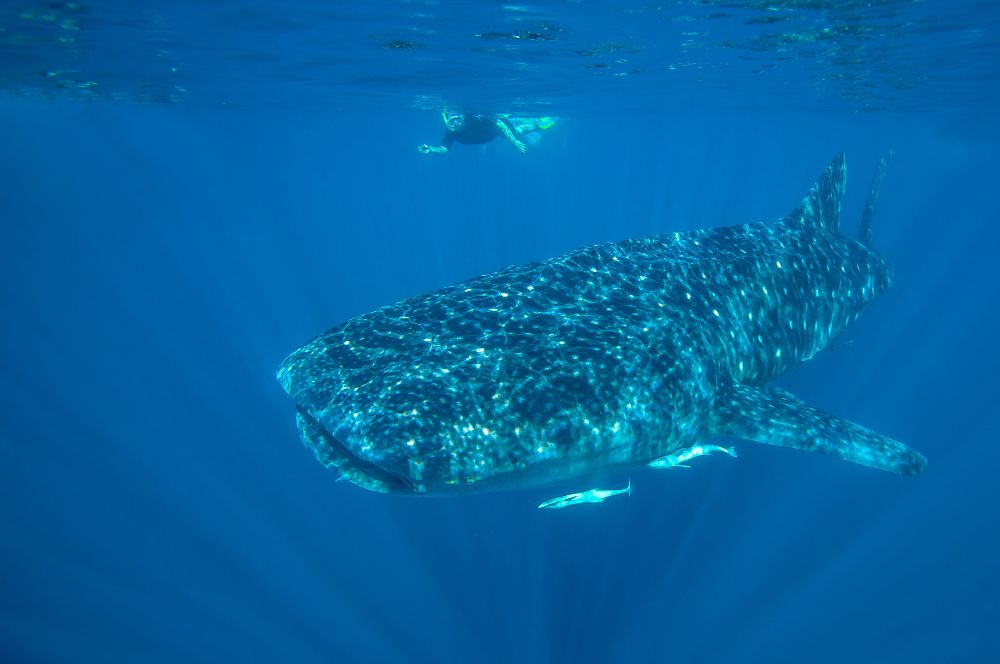
Western Australia is home to a remarkable variety of endemic species, making it a prime destination for divers seeking unique underwater encounters. From the exhilarating Ningaloo Reef, where you can swim with whale sharks and manta rays, to the Navy Pier dive site teeming with wobbegong, gray nurse, and whitetip reef sharks, Western Australia offers an unparalleled diving experience.
In addition to its famed Ningaloo Reef, Western Australia boasts other exciting dive sites such as the HMAS Swan wreck near Dunsborough and the Rowley Shoals, known for its strong tidal flows and exhilarating drift dives. With its diverse marine life and stunning underwater landscapes, Western Australia is a must-visit destination for divers seeking unforgettable encounters.
Exhilarating Ningaloo Reef
Ningaloo Reef, located off the coast of Western Australia, is a UNESCO World Heritage site that offers unforgettable encounters with whale sharks, manta rays, and a variety of marine life. Dive sites are so close to the shore that day trips are entirely possible, allowing divers to explore this underwater wonderland with ease. For those seeking a more immersive experience, liveaboard cruises are available to explore the more remote parts of the Ningaloo Reef.
Home to over 50% of the Indian Ocean’s entire coral life, Ningaloo Reef is a paradise for divers seeking vibrant underwater landscapes and unique marine encounters. From swimming with majestic whale sharks to witnessing the graceful manta rays gliding through the water, Ningaloo Reef offers a diving experience unlike any other.
Liveaboards and Dive Resorts in Australia
For divers seeking the ultimate Australian diving experience, liveaboards and dive resorts offer unparalleled access to the country’s best dive sites. From luxury cruises exploring the Great Barrier Reef to budget-friendly trips in Western Australia, there are liveaboard options catering to all levels of divers and budgets.
Dive resorts in Australia, such as Lady Elliot Island Eco Resort, provide divers with comfortable accommodations and easy access to incredible dive sites. With numerous dive shops, dive operators, and diving centres available throughout the country, divers can easily plan their perfect Australian diving adventure, whether they prefer day trips or multi-day liveaboard cruises.
Diving Seasons and Conditions
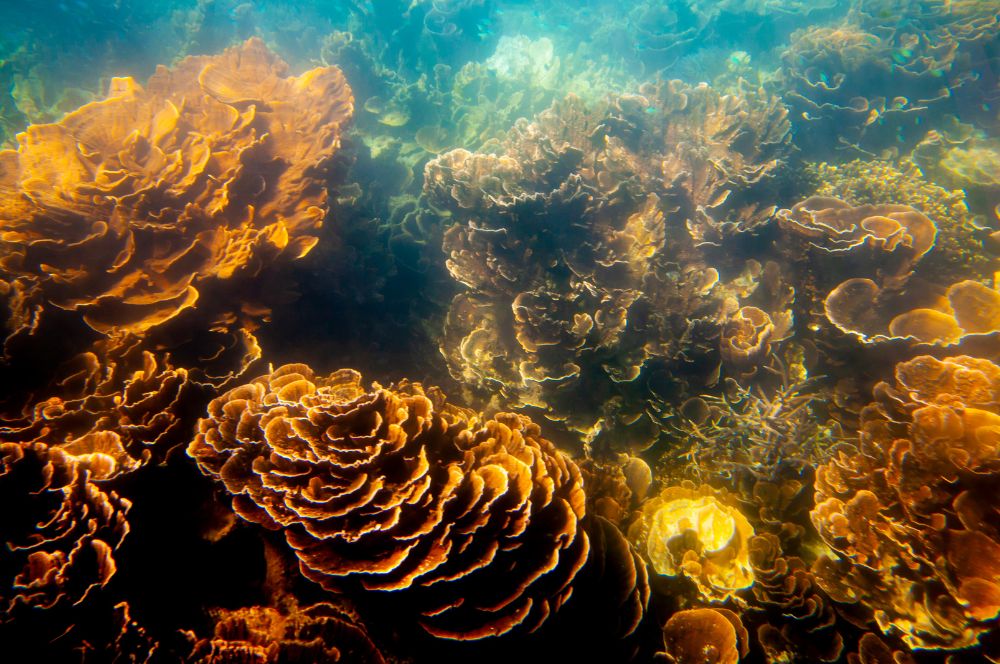
Diving in Australia is possible all year round, with the calmest sea conditions typically occurring between September and February. However, the best time to dive in Australia depends on the area, with numerous diving sites accessible year-round. In the southern regions, bad weather may prevent diving between May and October, so it’s essential to plan your trip accordingly.
Australia is a massive country having a land mass of 79% of the USA and as a result, dive conditions vary massively depending on location and the time of the year
No matter when or where you choose to dive in Australia, you’ll be met with unforgettable marine encounters and breathtaking underwater landscapes.
| Dive Site | Water Temperature Range (°C) | Water Temperature Range (°F) | Visibility Range (meters) |
|---|---|---|---|
| Great Barrier Reef | 24-30 | 75-86 | 10-30 |
| Lady Elliot Island | 23-29 | 73-84 | 15-30 |
| Sydney | 15-24 | 59-75 | 5-20 |
| Melbourne | 10-20 | 50-68 | 5-15 |
| Perth | 18-23 | 64-73 | 5-20 |
| Ningaloo Reef | 22-28 | 72-82 | 10-30 |
Travel Tips for Diving in Australia
When planning your diving adventure in Australia, it’s important to keep a few essential travel tips in mind. First and foremost, ensure that your travel insurance covers scuba diving activities. Additionally, pack reef-safe sunscreen to protect both your skin and the delicate coral ecosystems you’ll be exploring.
Sydney Airport offers the best options for international and domestic flights, with other major cities such as Perth, Melbourne, and Adelaide also providing numerous international connections. When choosing your diving destination, consider the liveaboard options available in Australia, which ranges from luxury cruises to budget-friendly trips and multi-day excursions.
With the right planning and preparation, you’ll be well on your way to experiencing the best diving that Australia has to offer.
Topside Activities and Non-Diving Experiences
Australia is more than just a diver’s paradise; the country offers a wealth of topside activities and non-diving experiences for visitors to enjoy. From stunning beaches and incredible wildlife encounters to breathtaking mountains and lush rainforests, there’s something for everyone to explore in Australia. During your visit, don’t miss the chance to experience the rich Aboriginal culture and iconic landmarks like the Sydney Harbor Bridge and Opera House.
In addition to its underwater wonders, Australia’s cities offer a variety of non-diving activities for visitors to enjoy. For example, in Sydney, you can visit the Sydney Harbour, take a coastal walk, swim at the Bondi Icebergs Club Pool, and explore the Royal Botanic Garden Sydney. With so much to see and do both above and below the water, Australia is an unforgettable destination for all travelers.
Practical Information for Divers
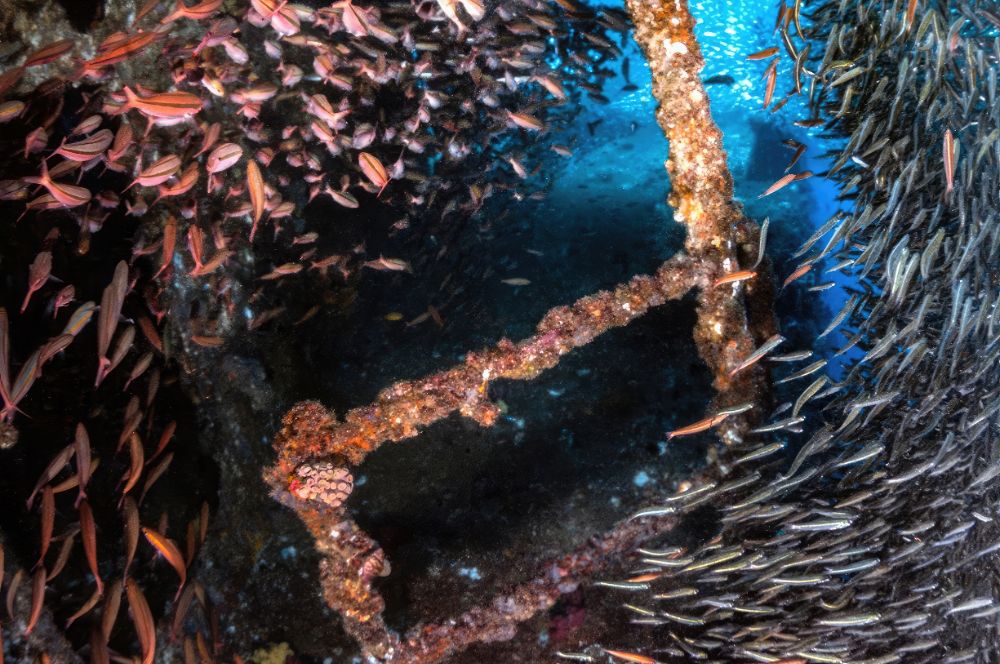
Before diving into Australia’s underwater wonders, it’s essential to familiarize yourself with the practical information for divers. Certification requirements for scuba diving in Australia vary depending on the dive site, but generally, divers must have a valid certification card from a recognized scuba diving organization.
Travel insurance is highly recommended for scuba diving in Australia, ensuring you’re covered in the event of any unexpected incidents. When planning your diving trip, take note of the recommended diving seasons and conditions for your chosen dive sites, helping you make the most of your underwater adventure.
With the right information and preparation, you’ll be well-equipped to explore Australia’s incredible dive sites and marine life.
Summary
Australia’s diverse dive sites and marine life make it a bucket-list destination for scuba divers worldwide. From the unparalleled Great Barrier Reef to the unique marine life of Australia’s temperate waters, this incredible country offers unforgettable underwater experiences for divers of all levels.
So whether you’re a beginner eager to explore the wonders of the deep or an experienced diver seeking new challenges, pack your gear and dive into the adventure of a lifetime. Australia’s best dive sites are waiting for you!
Frequently Asked Questions
Does Australia have good scuba diving?
Yes, Australia has amazing scuba diving! With the incredible Great Barrier Reef, giant kelp forests, shipwrecks and diverse marine life, Australia is a diver’s paradise.
Whether you’re looking for macro or big fish, you’ll find something to explore and enjoy!
How much does it cost to scuba dive in Australia?
Get excited - learning to scuba dive in Australia is an amazing experience and great value for money! For around $600 you get everything you need to become a certified diver, from all the necessary equipment hire to pool training sessions and four open water dives, with all associated certification and training fees included.
It’s time to explore the deep blue sea!
What are the best months to scuba dive in Australia?
Experience the best of scuba diving in Australia by visiting between June and November. This peak season offers clearer waters and better diving conditions. Temperatures hover in the low 60s to mid-80s and rainfall is uncommon, making this time of year ideal for an unforgettable underwater adventure!
The waters are crystal clear and the visibility is excellent, making it the perfect time to explore the depths of the ocean. You can expect to see a variety of marine life.
What do you need to scuba dive in Australia?
You must have a valid scuba diving certification from a recognized diving organization. This certification will show that you have the knowledge and skills necessary to scuba dive safely.
It’s time to start living your underwater dreams!
What are the certification requirements for scuba diving in Australia?
If you’re looking to scuba dive in Australia, make sure you are certified - and have a valid certification card from a recognized scuba diving organization! That way, you can explore the incredible sites around Australia with confidence!
RELATED POSTS
-
Your Sydney Holiday Awaits: Discover…
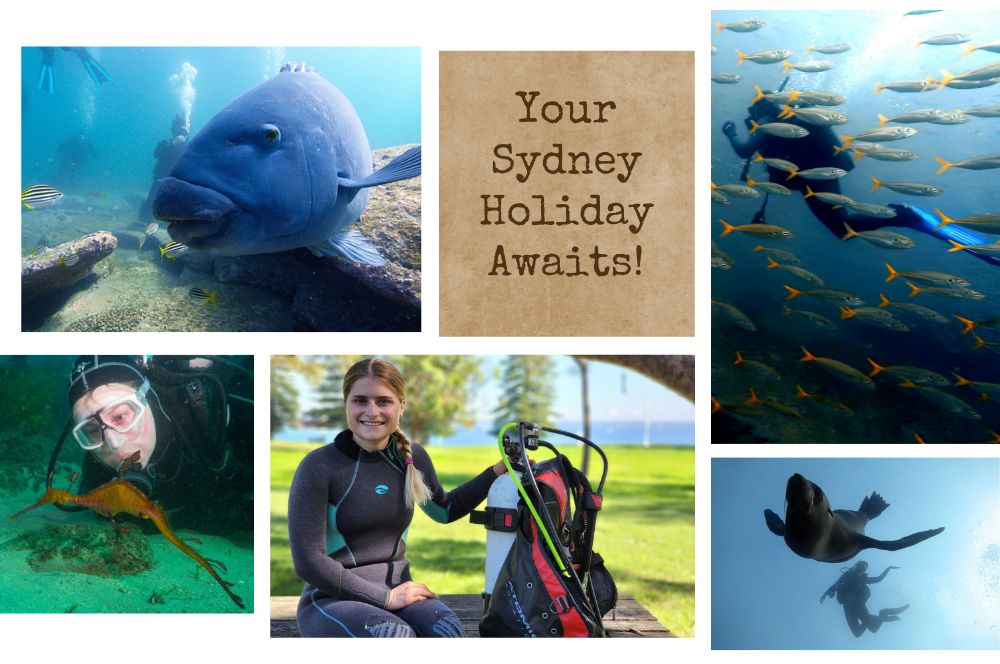
Your Sydney Holiday…
Your Sydney Holiday Awaits: Discover the Thrills of Scuba Diving Looking for an extraordinary activity to […] -
Diving in Australia: Ultimate Guide…
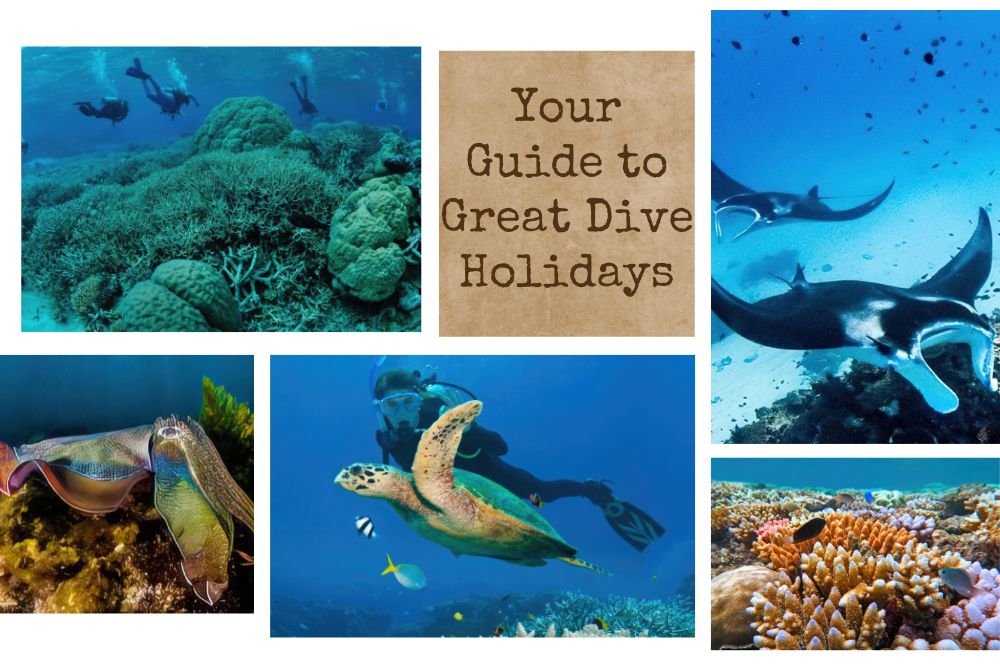
Diving in Australia:…
Unearthing Australia's Hidden Seascape: Your Guide to Great Dive Holidays Diving in Australia is like discovering […] -
Diving Australia | The Hidden Gems…
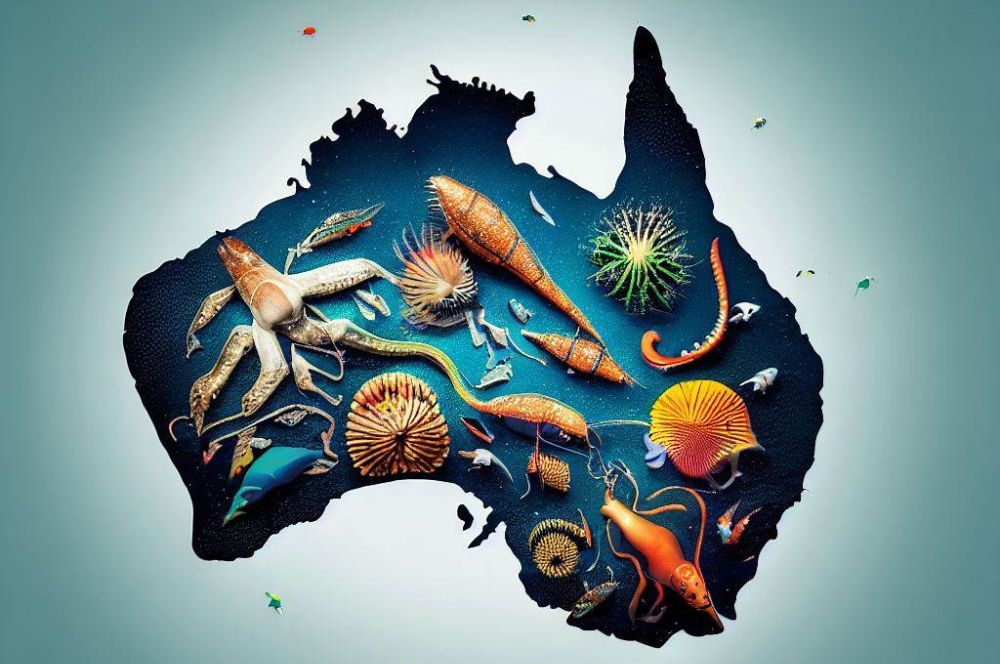
Diving Australia |…
Uncovering the Hidden Gems of Australia's Diving Scene Australia is known for its stunning landscapes and […] -
Scuba Diving in Australia
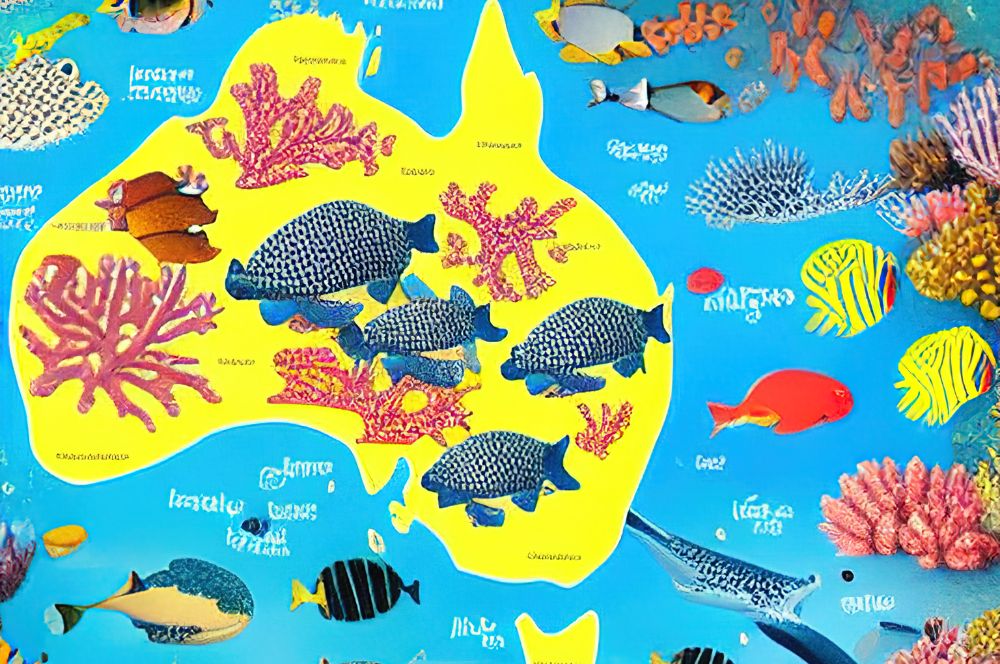
Scuba Diving in Australia
Scuba Diving in Australia Divers in Australia are spoilt for choice when it comes to world-class dive sites. […]
Recent Posts





